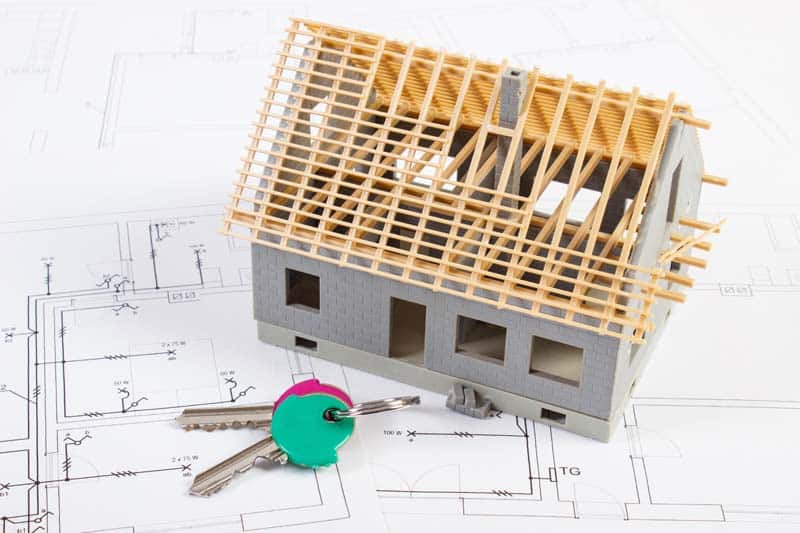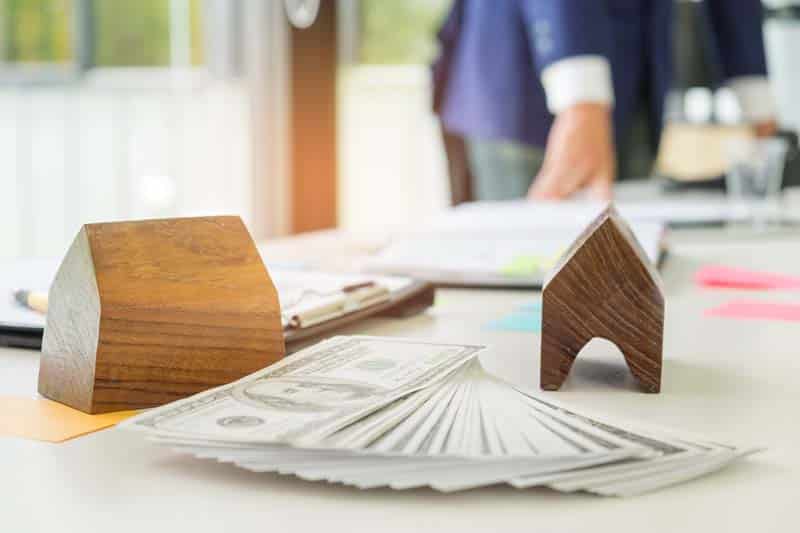
A house fire, hurricane, tornado, or another catastrophic event that destroys your home and the possessions within it is devastating. The loss is physical, monetary, and emotional, all at the same time. You may think back with gratitude that you, your loved ones, and your pets got out safely, all while mourning the loss of your material items, especially those with sentimental value.
And, before the dust has even cleared – figuratively and, perhaps, literally, – it’s time to start thinking, “How much would it cost to rebuild my home?” You’ll need to work with your insurance agency to determine the costs for rebuilding your home.
Even before such an event occurs, it’s important to make sure you have enough insurance to cover the costs of rebuilding your home at today’s prices. It’s scary to realize that 60% of U.S. homes are underinsured, according to CoreLogic, a company that provides data-driven real estate and insurance insights.
In addition to having enough coverage to rebuild your home, you’ll also want to make sure your insurance covers the cost of restoring the structures on your property and replacing any items inside your house and on your property.
What Affects the Costs of Rebuilding Your Home?
Many different aspects of your home, as well as the region where you live, affect rebuilding costs. These are the fundamental aspects of your home that affect its overall value:
- Your home’s total square footage
- The number of bathrooms and bedrooms in your home
- The number of floors in your home, typically one to four
- A finished basement or attic that adds to your home’s value and may have been damaged
- Exterior wall construction (vinyl siding, cultured stone, cedar shakes, fiber cement, stone, and brick are some common types of materials for exterior walls on Long Island)
- Type of roofing materials (such as asphalt shingles, which are most common on Long Island, wood, or metal)
- Type of windows and doors (bay windows or bow windows cost more to replace)
- Exterior details (such as fountains or ponds, hurricane shutters, trim, porches, decks, or porticos)
- Special interior features (such as fireplaces, wood-burning stoves, whirlpool tubs, kitchen islands, home theaters, wine cellars, distributed sound systems, integrated home technology systems, water features, etc.)
- Quality of materials throughout the home
We cover the different grades of builders’ materials in this post.
How to Make Sure Your Insurance Keeps Pace with Your Home’s Value
You can also use our home value calculator to get an estimate of how much insurance you need for your home after a catastrophic event.
But building costs can rise due to several factors not reflected in our calculator. A Coastal Insurance agent can review your policy annually to ensure you have insurance home insurance to cover your property and belongings after a catastrophic event like a home fire.
Here are a few additional factors to consider.
Local building codes – If your home was older, it may have to be rebuilt to new building code and electrical standards. This is especially true of homes constructed in the 60s and 70s, which are very common in some parts of Long Island. New building codes may require architectural design changes or material upgrades.
Additions or improvements you’ve made to your home – A house fire is always devastating. But if you just spent $100,000 on a kitchen upgrade, taking steps to create the home of your dreams, damage to your domicile can be even more heartbreaking.
Every time you make an addition or improvement to your home, especially if it is a major remodel like a kitchen or bathroom or an upgrade that increases the square footage of your home, make sure you have enough home insurance to cover the replacement cost of the updates.
Costs of labor and materials – The cost of construction labor may go up due to inflation. The prices of building materials may change due to inflation, tariffs, and even design trends that make some materials more desirable and, therefore, more expensive.
Following an Island-wide emergency such as Superstorm Sandy, the price of labor and materials may go up due to increased demand.
You can add an “inflation guard” to your policy to ensure you have enough insurance to cover the rising costs of labor and building materials following a catastrophic event, whether the event affected just your home, your neighborhood, or the whole region.
Replacement Value vs. Purchase Price: Buying the Home Insurance You Need
When you speak with your Coastal agent, you’ll want to make sure you are purchasing insurance to cover the “replacement value” of your home, not just the purchase price.
Part D, Section II of your policy pays for a place for you and your family to live while your home is under construction. The amount of money you’ll get is based on your level of coverage as well as the cost of housing in your area.
Purchasing Replacement Value Coverage (RVC) may cost a little more, but it will ensure that your new home is comparable to the house that was destroyed, a place where you can rebuild your life and create a home once again.
Tips for Replacing Your Personal Possessions and Household Goods
Your home is not just a set of walls, flooring, and appliances. The items inside help you live your daily life and may have personal meaning to you, as well.
If your home is destroyed, many of your possessions could be lost, as well. Unfortunately, many people vastly underestimate the value of the items inside their home and, therefore, can’t make an accurate insurance claim to replace them.
Don’t make a mistake or try to save money when it comes to insuring your household goods. Instead, follow these tips:
Purchase a policy for replacement cost coverage, not actual cash value – That beautiful Restoration Hardware sofa you purchased years ago has served your family well for many movie nights. But it’s depreciated in monetary value over the years.
If you need to replace your furniture, electronics, and appliances, you’ll undoubtedly want something that’s equal or better quality than the items that you lost. If you don’t want to waste time bargain-hunting to replace your household goods, you’ll want to purchase “replacement cost coverage.”
Replacement cost coverage does not deduct any money for depreciation but pays you the actual purchase price of your item at the time you bought it, with a specific cap indicated by your policy.
On the other hand, actual cash value pays you the replacement value minus depreciation. You can save money on your home insurance by choosing this level of coverage, but you may have to pay out-of-pocket to replace some of your beloved household items.
Purchase a home insurance rider for high-value items – Even if you have replacement cost coverage, your home insurance policy only covers your household goods “up to” a certain amount, usually 50 to 75% of the dwelling coverage.
If you have expensive jewelry, artwork, or a wine collection, your insurance carrier may require a rider to cover these items.
Invest in a home inventory – Don’t underestimate the value of your household goods as many people do.
If you’re facing a catastrophe, have just lost your home, and are now wondering how much your home insurance will cover to rebuild, you may find it hard to remember everything you own.
To make a claim, you’ll need to provide a list to the insurance adjustor. People often remember only the big-ticket items, when smaller items can add up to thousands of dollars in additional costs to replace.
A home inventory, which could include photos, receipts, and purchase prices of all the items in your home, should be stored digitally in the cloud, with a hard copy stored at a remote location.
Your home inventory could be your lifeline to recovering all you are owed, permitting you to rebuild collections, replace toys, electronics and furniture, and return to your previous lifestyle.
If you are facing a catastrophic loss, you have a lot on your mind. The last thing you want to worry about is, “How much would it cost to rebuild my home?”
Having a reputable insurance agency by your side can help you recover financially after a loss, rebuild your home, and restore your peace-of-mind.




![IBA Top Retail Brokers 2024 Medal[88] IBA's Top Retail Broker 2023](https://coastalinsurancesolution.com/wp-content/uploads/2024/07/IBA-Top-Retail-Brokers-2024-Medal88.png)



